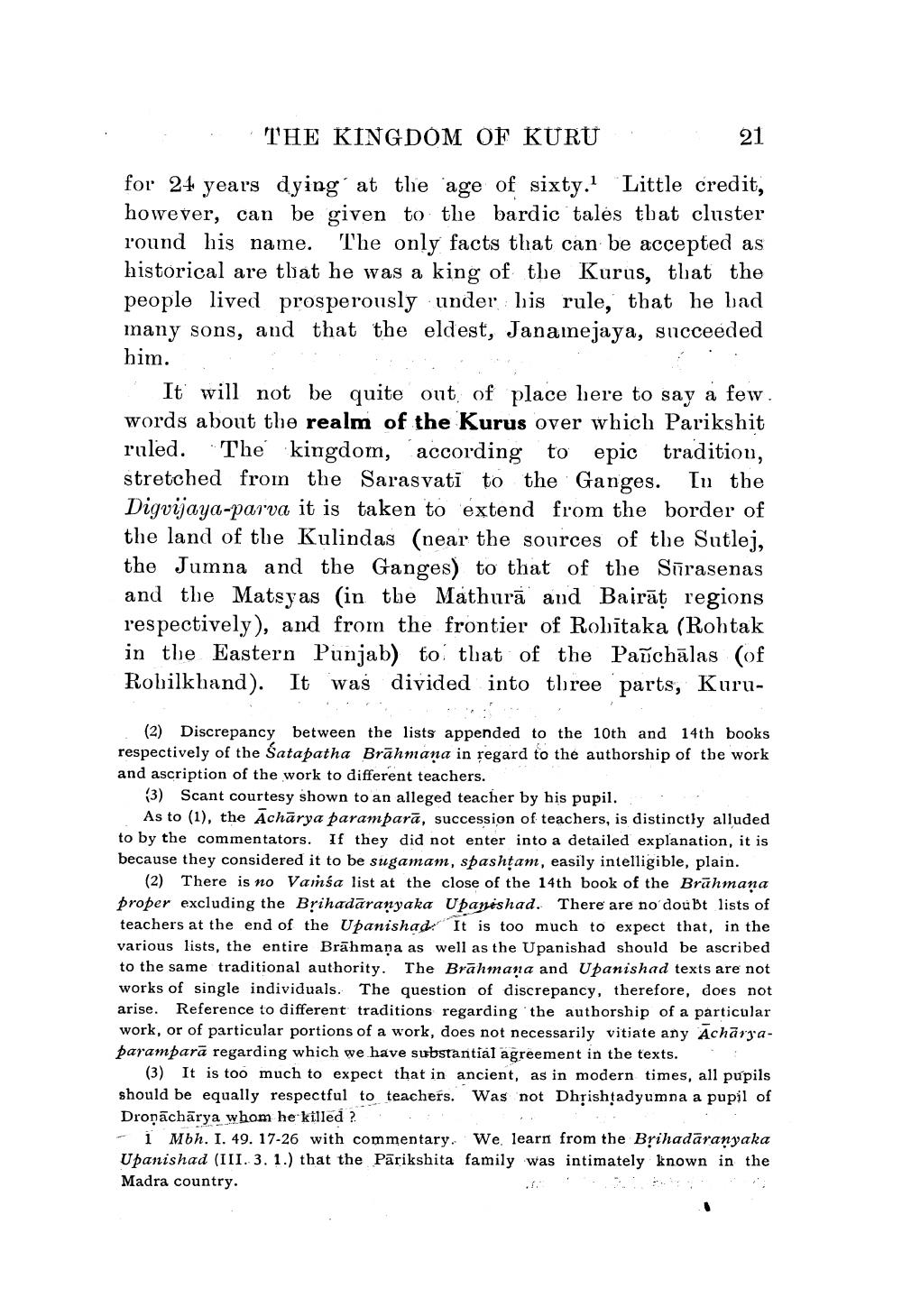________________
: THE KINGDOM OF KURU
2 1 for 24 years dying at the age of sixty. Little credit, however, can be given to the bardic talės that cluster round his name. The only facts that can be accepted as historical are that he was a king of the Kurus, that the people lived prosperously under his rule, that he bad many sons, and that the eldest, Janamejaya, succeeded him.
It will not be quite out of place here to say a few. words about the realm of the Kurus over which Parikshit ruled. The kingdom, according to epic traditiou, stretched from the Sarasvati to the Ganges. In the Digvijaya-parva it is taken to extend from the border of the land of the Kulindas (near the sources of the Sutlej, the Jumna and the Ganges) to that of the Sīrasenas and the Matsyas (in the Mathurā and Bairāt regions respectively), and from the frontier of Rohītaka (Rohtak in the Eastern Punjab) to that of the Pañchālas (of Rohilkhand). It was divided into three parts, Kuru
(2) Discrepancy between the lists appended to the 10th and 14th books respectively of the Satapatha Brāhmana in regard to the authorship of the work and ascription of the work to different teachers.
(3) Scant courtesy shown to an alleged teacher by his pupil. .
As to (1), the Achārya paramparā, succession of teachers, is distinctly alluded to by the commentators. If they did not enter into a detailed explanation, it is because they considered it to be sugamam, spashtam, easily intelligible, plain.
(2) There is no Vamśa list at the close of the 14th book of the Brāhmana proper excluding the Brihadaranyaka Upanishad. There are no doubt lists of teachers at the end of the Upanishad. It is too much to expect that, in the various lists, the entire Brāhmana as well as the Upanishad should be ascribed to the same traditional authority. The Brāhmana and Upanishad texts are not works of single individuals. The question of discrepancy, therefore, does not arise. Reference to different traditions regarding the authorship of a particular work, or of particular portions of a work, does not necessarily vitiate any Acharyaparamparā regarding which we have substantial agreement in the texts.
(3) It is too much to expect that in ancient, as in modern times, all pupils should be equally respectful to teachers. Was not Dhộishtadyumna a pupil of Droņāchārya whom he killed ? . . - 1 Mbh. I. 49. 17-26 with commentary. We learn from the Brihadaranyaka Upanishad (III. 3. 1.) that the Parikshita family was intimately known in the Madra country.




